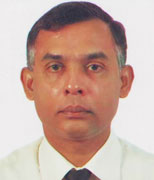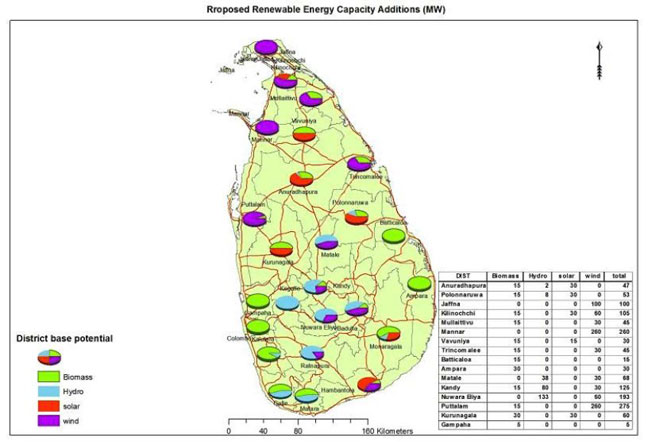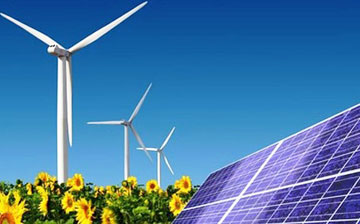More alternatives needed to secure power generation
by Dhaneshi Yatawara
Massive traffic jams on the roads as traffic lights break down,
factories and businesses experiencing a stand-still, hundreds of
families experiencing frequent power cuts - all symptoms of an energy
crisis. Have we experienced these symptoms recently? Not so severely as
yet.
|

Dr. Thusitha Sugathapala |
It was the decision of the Sri Lankan Power and Energy authorities
not to give annoying power cuts to the citizens, yet the most crucial
part of this is supplying the demand when the major source of power
supply faces a shortage.
Hydro power plays the major role in power generating in Sri Lanka.
During the peak hours of electricity usage which is generally from 6
p.m. to 8.30 p.m., the demand technically known as the Peak Demand is on
an average 2100 Mega Watts (MW). Out of this 1400 MW is generated by
hydro power plants. When the hydro power generation gets low, mainly due
to a drought situation, a huge gap is created in the power demand. And
the alternative in Sri Lanka is generating power through thermal power
plants to fill this power deficiency.
Meeting demands
Last week's news was that the water level of reservoirs near
hydro-power stations has receded as catchment areas did not receive
sufficient rain and hydro-power generation has also gone down to 18
percent, according to W.B. Ganegala Chairman of the Ceylon Electricity
Board. The water levels of Kothmale, Victoria, Randenigala, and Rantambe
reservoirs are currently showing a drastic drop. Thus, the alternative
is power generation through thermal power plants.
 "Though we do not experience power cuts the high cost that comes with
using more thermal power generation becomes the restriction," said
Director General of the Sustainable Energy Authority Dr. Thusitha
Sugathapala. This is the crisis in Sri Lankan electricity power supply. "Though we do not experience power cuts the high cost that comes with
using more thermal power generation becomes the restriction," said
Director General of the Sustainable Energy Authority Dr. Thusitha
Sugathapala. This is the crisis in Sri Lankan electricity power supply.
As a country going through a rapid process of development, the demand
to supply power consistently at a reasonable tariff is immense.
Supplying domestic and industrial power happens through various
expansion programs countrywide.
As Dr. Sugathapala explained, in Sri Lanka energy mainly generated
through large hydro, petroleum, coal, bio mass and few other Renewable
Energy sources (REs) such as small hydro, wind and solar.
The total consumption is around 8.9 Metric Tonnes of Oil Equivalent
(MToE). According to statistics gathered by Dr. Sugathapala, of this
total consumption a major portion (48 percent) goes to domestic and
commercial usage, 24 percent goes for industries and other 28 percent to
transport.
In Sri Lanka electricity gross generation is calculated to be on an
average 11,800 Giga Watts per hour (Gwh), as Dr. Sugathapala said. "Of
the total electricity generated 23 percent comes from Hydro power
plants, 71 percent comes from thermal power generation and another 6
percent from New Renewable Energies such as biomass, solar and wind," he
said.
This is more or less the current picture of power supply in Sri Lanka
that runs at a high cost.
More demand
It is the Government's mandate to transform the country into a
strategically important economic centre by developing it as a Naval,
Aviation, Commercial, Energy and Knowledge Hub. And this means more
demand for energy to make the work going in addition to becoming the
energy hub.
"If we take the national policies on developing the energy sector
basically it focuses on sustainable development of energy resources,
power conversion facilities, safe and reliable energy delivery systems
enabling the use of energy by the entire population. In such a backdrop
while providing basic energy needs the Government has to look in to
ensure energy security, promote energy efficiency and conservation and
protect energy facilities from adverse environmental impacts," said Dr.
Sugathapala.
NREs
It is in this scenario that promoting renewable and clean energy
comes in to key play, he said. This is the main focus of the Sustainable
Energy Authority.
"Energy security, environment sustainability and socio-economic
development go hand in hand to succeed. And these factors are the
driving forces behind bringing in efficient New Renewable Energies
(NREs) to fill in the growing energy demand," Dr Sugathapala said.
 Last year (2013) selected NREs for Sri Lanka had a capacity to
generate power up to 321 MW. Last year (2013) selected NREs for Sri Lanka had a capacity to
generate power up to 321 MW.
The plan is to increase this by 10 percent in 2016 and by 20 percent
in 2020, according to Dr. Sugathapala.
"These NREs are the areas that give us the space to expand our power
generating capacities. In hydro power we have utilised our full
capacities. Yet the restrictions that comes with using NREs is the need
to develop an advanced system to bring the generated power to the
national grid and its related highly technical requirements," he said.
As he explained though we have more than enough wind and solar power
these natural factors tend to fluctuate.
To provide a constant power to the national grid a technical system
needs to be developed and for this a considerable amount of research and
development has to take place.
"We need a dynamic modelling to serve this purpose and advanced
forecasting tools and technical know-how to efficiently establish these
New Renewable Energies," he said. Sri Lanka still lacks long-term
resource data and the local capacity to manufacture.
"If there is a strong research and development culture in Sri Lanka
it would be highly beneficial for the up coming energy sector.
A research and development investment framework is being formulated
under the Ministry of Technology and Research focusing on ten thrust
technological areas including energy.
We strongly hope that this initiative would lay a strong foundation
for the development of the energy sector. Because at the end a
sufficient constant supply of energy means an uninterrupted national
development," Dr. Sugathapala said. |

